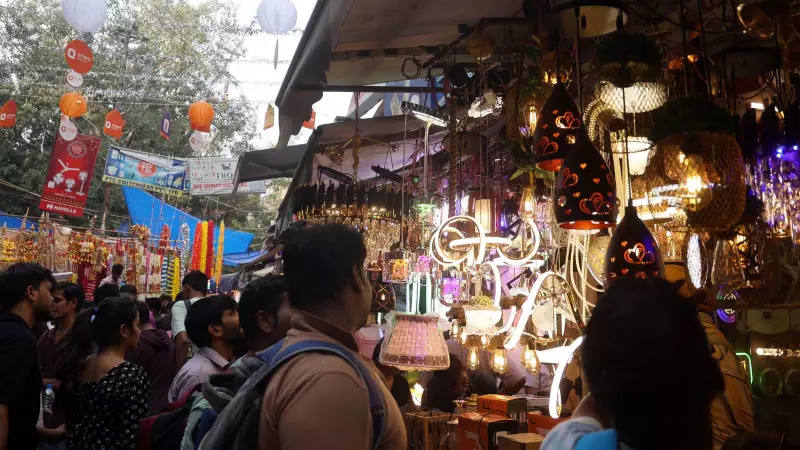
As the Festival of Lights approaches, Delhi's bustling markets are awash with the familiar sounds and sights of Diwali preparation. From Chandni Chowk's narrow lanes to Lajpat Nagar's vibrant stalls, the air crackles with anticipation. Yet, beneath the surface of this seasonal hustle, a different story unfolds—one where government tax concessions have failed to spark the explosive sales growth traders traditionally expect.
The Festive Facade: Crowds Don't Equal Cash
Market associations across the capital report healthy footfalls, with families thronging popular shopping destinations for traditional Diwali purchases. The visual spectacle is undeniably festive: shops overflowing with decorative lights, colorful diyas, fragrant candles, and sparkling fireworks. However, traders note that browsing crowds aren't necessarily converting into buying bonanzas.
"The enthusiasm is visible, but the spending is measured," observes a senior member of the Chandni Chowk Sarv Vyapar Mandal. "Compared to pre-pandemic Diwali seasons, the average ticket size per customer has noticeably decreased."
GST Reductions: Much Ado About Nothing?
Recent reductions in Goods and Services Tax (GST) on numerous festive items were expected to serve as a catalyst for consumer spending. The theory was simple: lower prices would encourage higher volumes. The reality, however, appears more complex.
Traders specializing in popular Diwali products like decorative lights, earthen lamps, and rangoli colors report that the GST benefits—while welcome—haven't significantly altered consumer behavior. "The price difference after tax cuts is often marginal on individual items," explains a Lajpat Nagar shopkeeper. "When people are cautious about their overall budget, saving ten rupees on a hundred-rupee item doesn't dramatically change their shopping calculus."
The Cautious Consumer Mindset
Several factors appear to be contributing to this restrained spending pattern:
- Economic uncertainty continues to influence household budgeting decisions
- Inflation concerns make consumers more deliberate about discretionary spending
- Alternative celebrations with simpler, more sustainable options gaining traction
- Staggered purchasing rather than large one-time shopping sprees
A South Extension retailer notes, "People are buying what they need, not what they want. The impulse purchases that typically drive festival sales are noticeably absent this season."
Silver Linings and Specific Strengths
Despite the tempered overall sentiment, certain categories are performing reasonably well. Traditional clothing stores report steady business, while sweet shops anticipate last-minute surges. The market for premium, artisanal diyas and handmade decorations also shows resilience, suggesting that quality-conscious consumers remain willing to spend on unique items.
As Delhi prepares to illuminate its homes and streets for Diwali, the city's markets present a paradox: plenty of festive energy, but cautious economic optimism. The lights will still twinkle, the fireworks will still burst, but for the business community, this Diwali season appears to be more about steady glow than spectacular boom.





